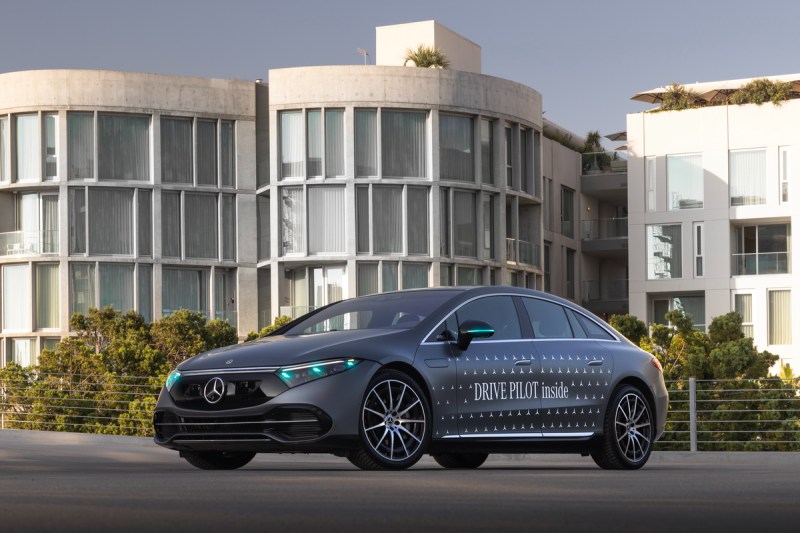
If you’re wondering about progress with self-driving cars, look for the turquoise lights. Mercedes-Benz recently received approval from California and Nevada to use turquoise marker lights to alert other drivers to the proximity of automated vehicles. The permissions differ between the two states, but the color could become the standard as autonomous cars proliferate.
The approval in California allows Mercedes-Benz to test turquoise lights on vehicles with autonomous driving on freeways. California’s permit is valid for two years. In Nevada, the approval will enable Mercedes to use turquoise marker lists starting with model year 2026 EQS and S-Class production vehicles with Mercedes Drive Pilot. The Nevada program does not have a time limit, but the approval is subject to change by legislation.

Why does Mercedes get to choose the marker light color?
Approval or certification of automated driving systems is up to individual states. There is no federal certification — at least not currently. Mercedes Drive Pilot is the only SAE-Level 3 conditionally automated driving system certified for use in the U.S. Mercedes chose turquoise for its Drive Pilot system vehicle marker light. Still, the color isn’t a national or international standard. Yet.
There are five SAE international levels of Autonomous Driving /Sensor Packages:
| Level 0 | No driving assistance | The driver controls all vehicle motion. |
| Level 1 | Driver Assistance | The driver controls the vehicle and can turn on select single-direction assistance such as automated braking or active cruise control. |
| Level 2 | Partial Driving Automation | The driver controls the vehicle and can select semi-autonomous operation with multi-directional assistance such as lane centering, steering, and automatic braking and accelerating. |
| Level 3 | Conditional Driving Automation | Fully autonomous driving in specific conditions and situations, but the driver must be alert and ready to take complete control quickly. |
| Level 4 | High Driving Automation | Fully autonomous driving, but the driver can choose to take control. In minimal-risk situations, the driver must be able to take commands. |
| Level 5 | Full Driving Automation | Fully autonomous driving with no driver required. A driver may take over when the conditions are safe. |

Why did Mercedes choose turquoise automated driving marker lights?
According to Mercedes-Benz, the company chose turquoise because the color meets two criteria: visibility and differentiation. Turquoise is a relatively light, bright color that is easy to discern. Turquoise is not commonly used on street or highway signage, traffic lights, emergency vehicles, or other vehicle lights. The SAE also recommends turquoise for automated driving system (ADS) indicator lights inside cars.

Familiarity may help acceptance
There’s no national or international standard for external market lights for automated driving. Consumer acknowledgment and acceptance of the benefits of autonomous driving systems have been slow for several reasons, including unfamiliarity with the advantages of automated driving versus human drivers, mistrust of the technology fostered by critics and heightened by publicized incidents of failure, and plain old resistance to change. Like other vehicle manufacturers, Mercedes-Benz wants to build global understanding, acceptance, and even demand for safer driving systems.
Pioneering automated driving systems and the associated marker light color isn’t Mercedes first rodeo in automotive technology innovation. Other pioneering technologies from Mercedes include antilock braking (ABS), all-wheel drive, CFC-free climate control, electronic stability control, and smart key anti-theft protection.



